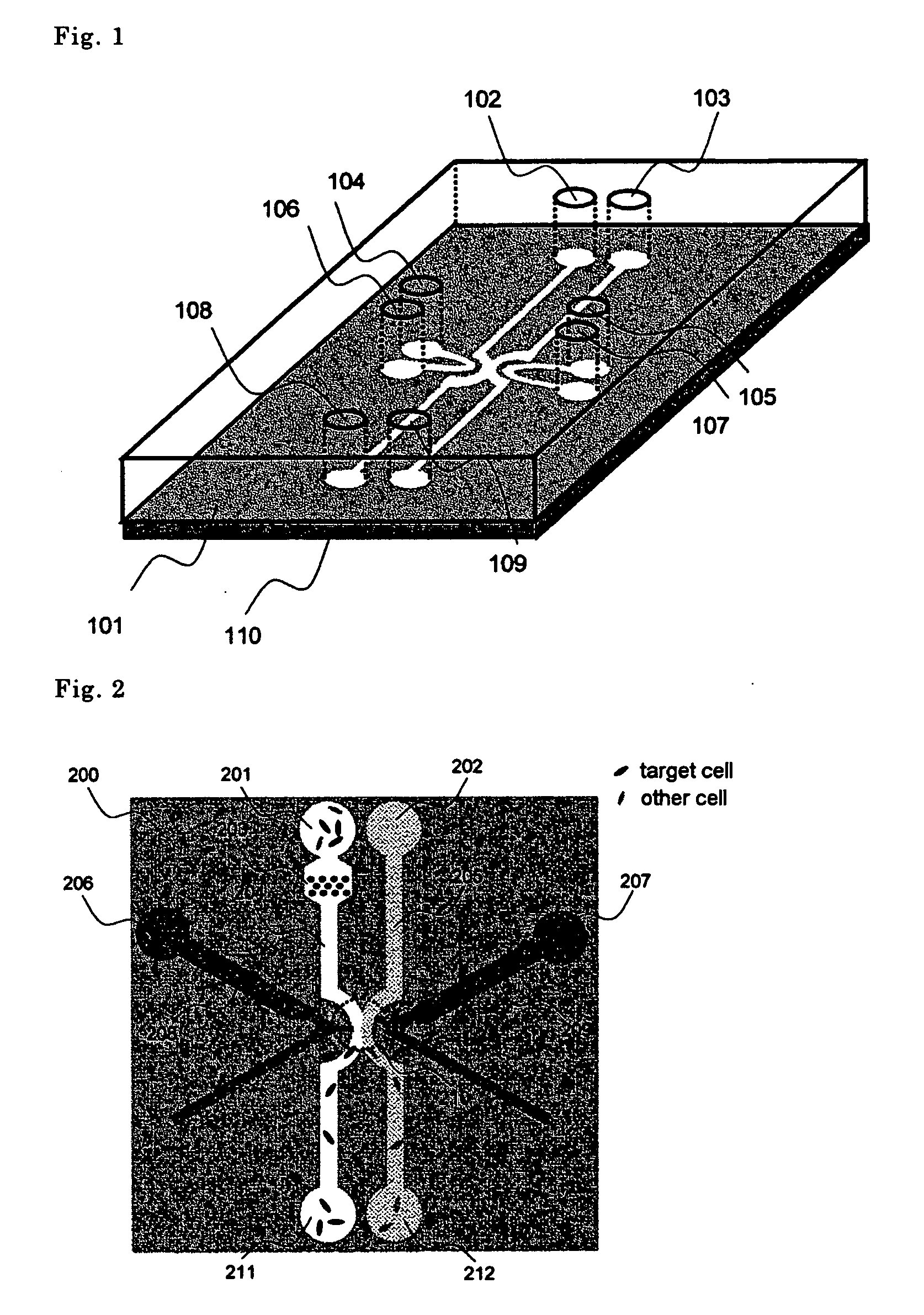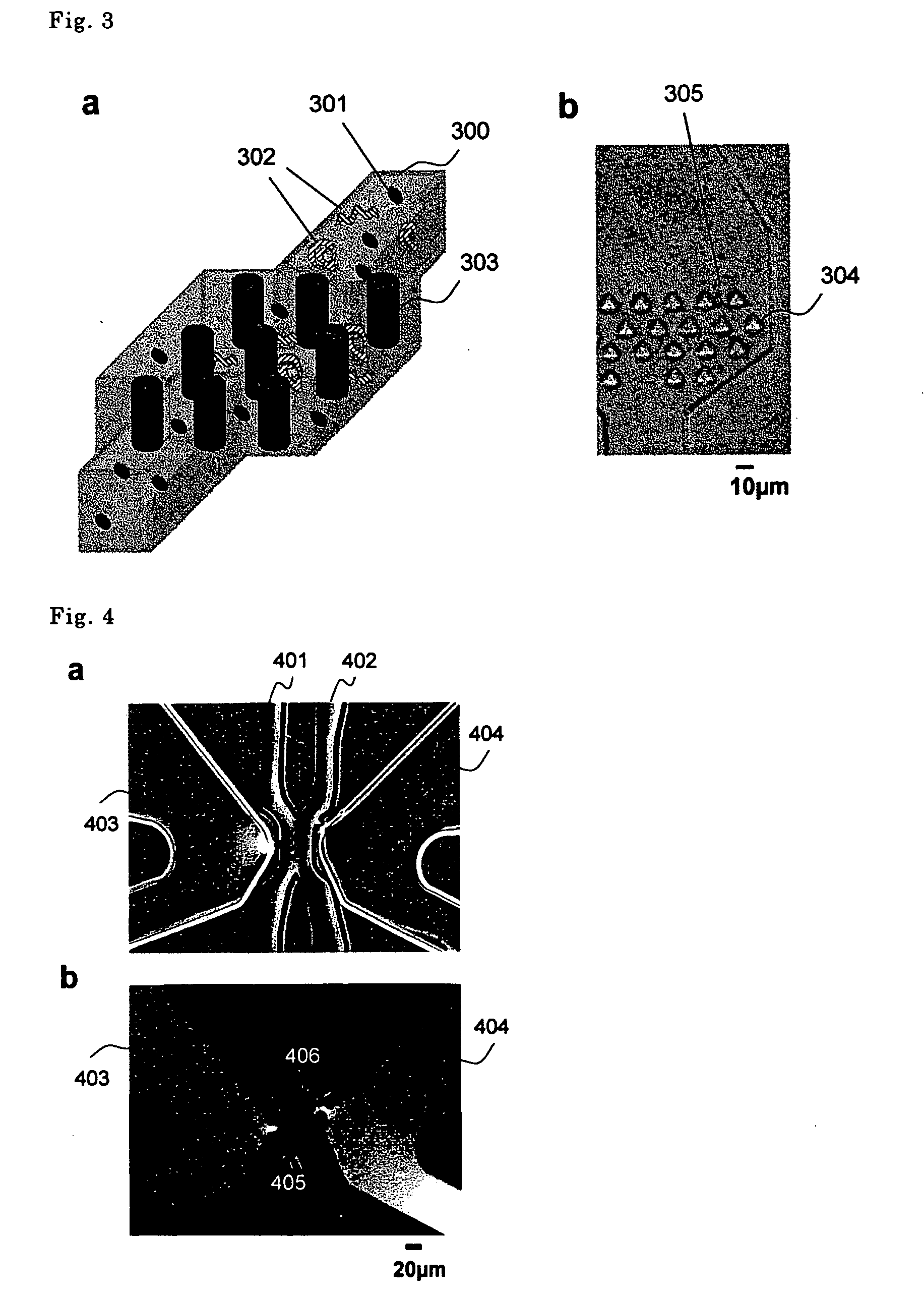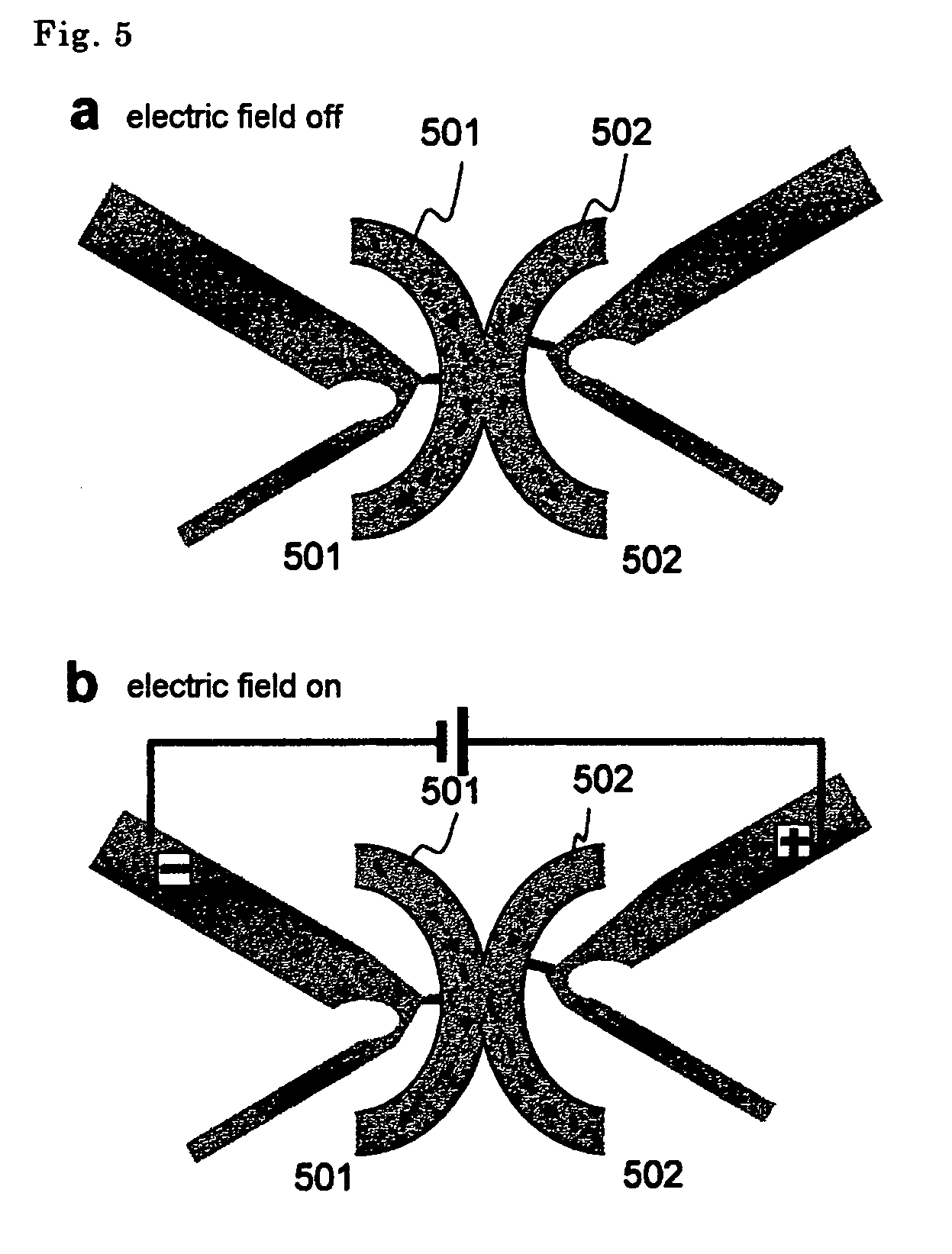Cell separation apparatus
a cell sorting and cell technology, applied in the field of cell sorting apparatus, can solve the problems of sample not being able to be directly observed, cell damage, and drawback of cell sorter
- Summary
- Abstract
- Description
- Claims
- Application Information
AI Technical Summary
Benefits of technology
Problems solved by technology
Method used
Image
Examples
Embodiment Construction
[0039] Now, one embodiment of a cell separation apparatus of the present invention will be described but the present invention is not to be restricted in any way to this embodiment.
[0040]FIG. 1 shows schematically one embodiment of the systematic construction of a cell separation apparatus (cell sorter) of the present invention. This cell sorter is constructed in the form of a channel within a chip 101. The chip has a glass base plate 110 adhesively bonded at its bottom, on which glass base plate is formed a micro-channel. Then, the thickness of the glass base plate is made as thin as possible in order to conduct an optical measurement. For example, when an object lens is used which has a numerical aperture of 1.4 and a factor of 100, it is desirable that the glass base plate has a thickness of 0.2 mm or less. On the top surface of the chip 101, a hole 102 for introducing a sample solution containing a cell into a micro-channel, a hole 103 for introducing a cell-free solution into ...
PUM
| Property | Measurement | Unit |
|---|---|---|
| electric voltage | aaaaa | aaaaa |
| distance | aaaaa | aaaaa |
| distance | aaaaa | aaaaa |
Abstract
Description
Claims
Application Information
 Login to View More
Login to View More - R&D
- Intellectual Property
- Life Sciences
- Materials
- Tech Scout
- Unparalleled Data Quality
- Higher Quality Content
- 60% Fewer Hallucinations
Browse by: Latest US Patents, China's latest patents, Technical Efficacy Thesaurus, Application Domain, Technology Topic, Popular Technical Reports.
© 2025 PatSnap. All rights reserved.Legal|Privacy policy|Modern Slavery Act Transparency Statement|Sitemap|About US| Contact US: help@patsnap.com



